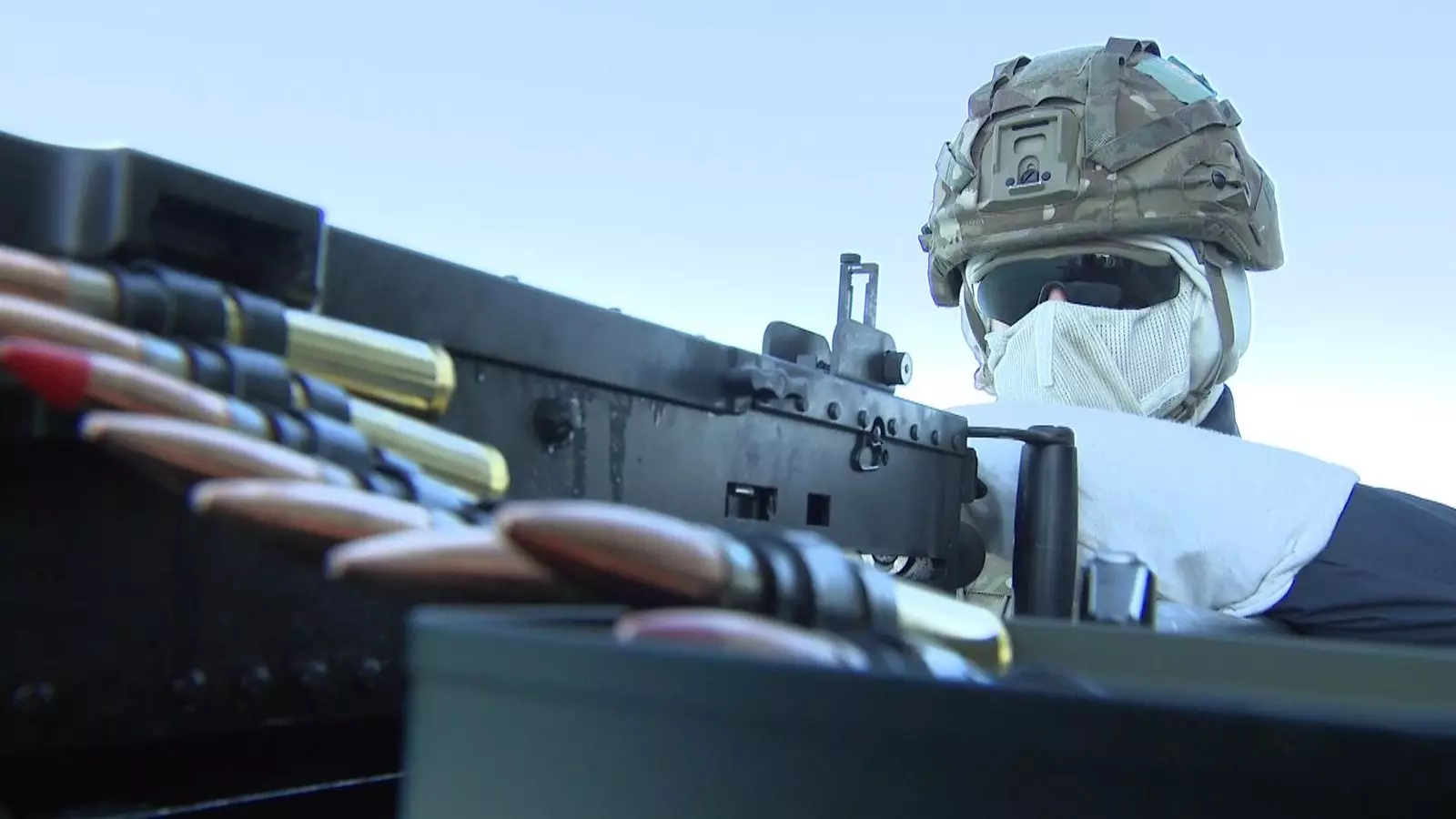In an age marked by rapid technological advancements and geopolitical tensions, the defense capabilities of nations are being tested on an unprecedented scale. The recent military exercise involving HMS Dauntless, a Type 45 destroyer of the Royal Navy, exemplifies the precarious balancing act between preparedness and the suffocating limitations imposed by budget cuts and policy miscalculations. As the destroyer prepares for a potential deployment into hostile waters, one has to wonder: can a nation truly defend itself when its arsenal hangs by a thread?
On a seemingly average Tuesday off the Welsh coast, the routine transformed into a theatre of high alert as the crew of Dauntless responded to simulated threats from enemy drones and uncrewed vessels. This drill was not merely about readiness; it was a stark reminder that the security of nations hangs by a slender cord of preparations and capabilities. With a looming deployment alongside the HMS Prince of Wales through waters fraught with danger—from Iranian-backed Houthi rebels to rogue assets proliferating explosive-laden drone vessels—the stakes could not be higher.
Illusions of Preparedness
While Minister of Armed Forces Luke Pollard spoke confidently to the media about the military’s formidable capabilities, the underlying reality tells a different story. The Royal Navy’s firepower may look impressive on paper, yet it is increasingly overshadowed by a painful truth: years of defense cuts have left the fleet starved of necessary resources. Although Pollard assures an increased defense budget of 2.5% of GDP by 2027, many seasoned analysts within the defense community regard this as a token gesture rather than a robust response to genuine threats.
This underestimation of global tensions, particularly in volatile regions like the Middle East, reveals a concerning disconnect between government outlooks and the realities on the ground. Assertions of naval power presenting “options” ring hollow when faced with the straightforward fact—capabilities are dwindling, and military strategy cannot solely hinge on bravado and optimistic rhetoric. The once-mighty fleet is now left grappling with the chilling prospect that its competence might not keep pace with evolving modern warfare.
Technological Arms Race: The Emergence of Drones
The comprehensive training exercise highlighted not just the Navy’s current state but also an evolving menace that threatens global maritime security: unmanned systems. The utilization of drones—both aerial and maritime—has morphed from futuristic fascination to immediate threat. Observing the engagement of the destroyer’s Phalanx cannon, spewing thousands of armor-piercing rounds to neutralize a simulated threat, brings to light not just the Navy’s readiness but the aggressive nature of technological warfare. In this new age, the margins of error have narrowed, and the ability to adapt swiftly to novel threats has become invaluable.
Ukraine’s effective use of drone technology against the Russian Black Sea Fleet serves as a sobering example—a firsthand demonstration of how a weaker force can exploit advanced UAVs to great effect. This evolving dynamic underscores the necessity for the Royal Navy and its counterparts to not just be reactive but also proactive in embracing innovative strategies and technologies to fend off emerging threats.
The Credibility Crisis
However, as discussions about defense budgets and innovative strategies continue, a cloud of skepticism looms over the effectiveness of current policies. With advocates for an aggressive military posture calling for much more than mere promises of future funding, the remaining question is whether these efforts are merely delaying the inevitable decline of a once-mighty naval force.
The urgent need for tangible reforms—a drastic re-evaluation of threats and strategic allocations of resources—articulates a fundamental shift required in how the United Kingdom perceives and prioritizes its national security landscape. This is not simply about keeping pace with adversaries; it’s about setting the course for future maritime strategy with deliberate, calculated steps. The time for complacency has faded; the age of swift and versatile responses to technological and geopolitical threats beckons, yet the question remains—will the United Kingdom embrace this reality, or continue to drift, sailing on illusions?


Leave a Reply